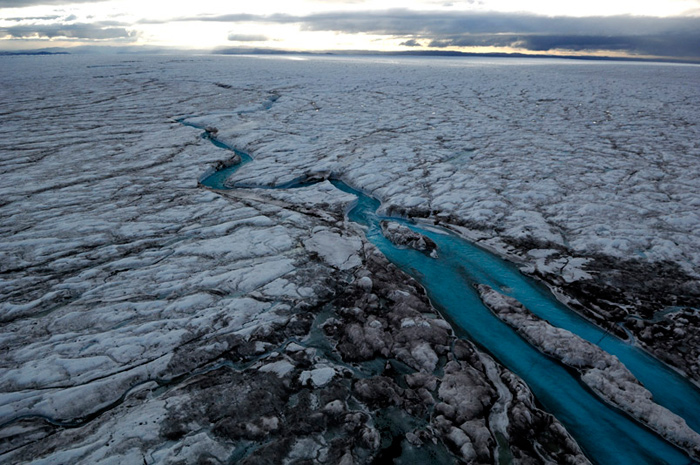 Glacier and ice stream movement is complex. Although glaciers are solid ice, they are in constant motion. Many glaciers end at the sea, where chunks of ice break off, or calve, into the water.
Glacier and ice stream movement is complex. Although glaciers are solid ice, they are in constant motion. Many glaciers end at the sea, where chunks of ice break off, or calve, into the water.
Alpine Glaciers

 Alpine glaciers, also called mountain glaciers, are found throughout the world’s high mountains. If a mountain glacier increases in size and begins to flow down the valley, it is then described as a valley glacier.
Alpine glaciers, also called mountain glaciers, are found throughout the world’s high mountains. If a mountain glacier increases in size and begins to flow down the valley, it is then described as a valley glacier.
Some, such as Alaska’s Columbia Glacier, are literally rivers of ice, flowing down mountains and carving valleys.
Greenland and Antarctica

 The largest glaciers are continental ice sheets or icecaps, enormous masses (greater than 50,000 square kilometers [12 million acres]) of ice found only in Antarctica and Greenland. These sheets contain vast quantities of fresh water. If the Greenland ice sheet melted, it would cause sea levels to rise some 20 feet (6 meters) all around the world. If the Antarctic ice sheet melted, sea levels would rise up to about 200 feet (60 meters).
The largest glaciers are continental ice sheets or icecaps, enormous masses (greater than 50,000 square kilometers [12 million acres]) of ice found only in Antarctica and Greenland. These sheets contain vast quantities of fresh water. If the Greenland ice sheet melted, it would cause sea levels to rise some 20 feet (6 meters) all around the world. If the Antarctic ice sheet melted, sea levels would rise up to about 200 feet (60 meters).
This meltwater lake was created by warm summer temperatures on the surface of the Greenland Ice Sheet.
The water pooling on the surface of a glacier or ice sheet is heavier and denser than ice. It eventually flows into moulins, or stream channels, which drill their way down through the ice; the water then flows out the base of the glacier into the ocean. This meltwater lubricates the glacier bed and speeds up the flow of ice into the sea. Global warming has caused melting to occur dozens of miles further inland than 20 years ago.
The largest single mass of ice on the planet is the Antarctic ice sheet, which stretches over 14 million square kilometers (about 5½ million square miles) and contains more than 60% of all the fresh water in the world. The Antarctic ice sheet covers 98% of the Antarctic continent. Warming has been occurring on the Antarctic peninsula (where the Larsen B ice shelf was located) and increasingly in West Antarctica, where ice extends well below sea level.







